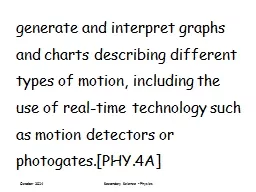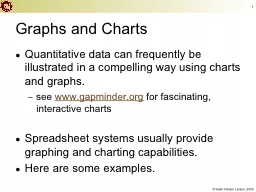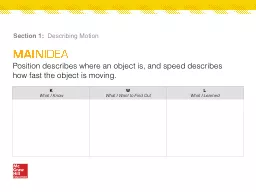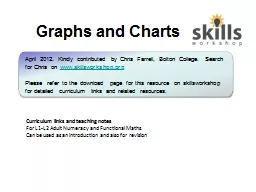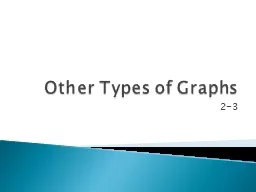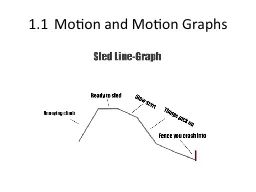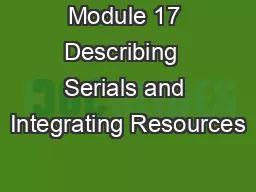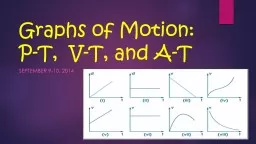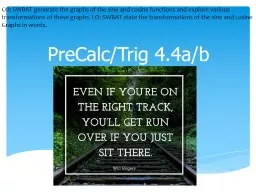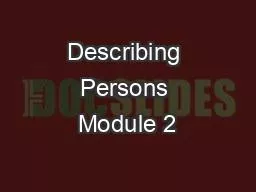PPT-generate and interpret graphs and charts describing different types of motion, including
Author : mofferro | Published Date : 2020-06-22
photogates PHY4A October 2014 Secondary Science Physics describe and analyze motion in one dimension using equations with the concepts of distance displacement
Presentation Embed Code
Download Presentation
Download Presentation The PPT/PDF document "generate and interpret graphs and charts..." is the property of its rightful owner. Permission is granted to download and print the materials on this website for personal, non-commercial use only, and to display it on your personal computer provided you do not modify the materials and that you retain all copyright notices contained in the materials. By downloading content from our website, you accept the terms of this agreement.
generate and interpret graphs and charts describing different types of motion, including: Transcript
Download Rules Of Document
"generate and interpret graphs and charts describing different types of motion, including"The content belongs to its owner. You may download and print it for personal use, without modification, and keep all copyright notices. By downloading, you agree to these terms.
Related Documents

